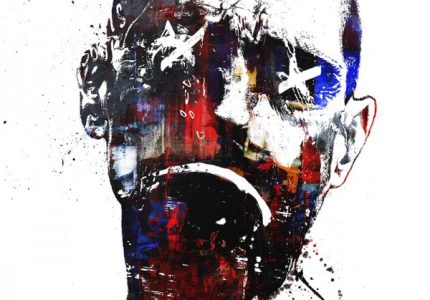Overview of the Graphic Design Course at UNISA
The Graphic Design Course at UNISA offers students a comprehensive introduction to the fundamentals and advanced concepts of visual communication. Designed to equip learners with essential skills, the program emphasizes creativity, technical proficiency, and innovative problem-solving. Through a blend of theoretical knowledge and practical application, students are prepared to meet the dynamic demands of the graphic design industry and develop their unique design style.
Course Objectives and Learning Outcomes
The Graphic Design Course at UNISA offers students a comprehensive introduction to the fundamental principles and practices of graphic design. It aims to equip learners with the essential skills needed to create visually compelling and effective communication materials across various media platforms.
The course objectives include developing students’ abilities in visual communication, digital design, and the use of industry-standard tools and software. It also emphasizes fostering creativity, enhancing technical proficiency, and understanding design concepts within commercial and cultural contexts.
Upon completion of the course, students will be able to apply design principles to real-world projects, utilize design software confidently, and produce professional-grade visual content. Additionally, they will have strengthened their problem-solving skills and gained a deeper understanding of the role of graphic design in advertising, branding, and multimedia communication.
Target Audience and Entry Requirements
The Graphic Design Course at UNISA offers a comprehensive program designed to equip students with essential skills and knowledge in visual communication, design principles, and modern digital tools. The course focuses on fostering creativity, technical proficiency, and an understanding of industry standards to prepare graduates for diverse careers in the graphic design field.
The target audience for this course includes aspiring graphic designers, artists, visual communicators, and individuals seeking to develop their creative skills for professional or personal projects. It is suitable for recent graduates, working professionals looking to enhance their design expertise, and anyone passionate about pursuing a career in the digital design industry.
Entry requirements for the UNISA Graphic Design Course typically include a South African National Senior Certificate or an equivalent qualification. Candidates are often expected to demonstrate a basic proficiency in art and design, creativity, and a good command of English. Portfolios or previous work may also be requested during the application process to assess applicants’ potential and motivation for the program.
Course Structure and Duration
The Graphic Design Course at UNISA offers a comprehensive program designed to equip students with essential skills in visual communication, creativity, and technical proficiency. The course focuses on developing proficiency in design principles, digital tools, and project management to prepare students for careers in various graphic design fields.
The course structure typically includes theoretical modules on design theory, art history, and communication, along with practical modules covering digital illustration, branding, and layout design. Students are expected to complete a combination of coursework, projects, and assessments that build their portfolio and professional capabilities.
The duration of the Graphic Design Course at UNISA generally spans over three years for a full undergraduate qualification. However, flexible study options may be available, allowing students to progress at their own pace, depending on their individual circumstances. The program aims to balance foundational knowledge with practical experience to ensure graduates are industry-ready.
Curriculum Content
The curriculum content for the graphic design course at UNISA is thoughtfully structured to equip students with both creative and technical skills essential for success in the design industry. It covers fundamental principles of design, typography, visual communication, and digital tools, ensuring a comprehensive learning experience. Through practical projects and theoretical knowledge, students are prepared to innovate and adapt to the evolving demands of graphic design.
Fundamentals of Design Theory
The curriculum content for the Fundamentals of Design Theory in the UNISA graphic design course encompasses essential principles and concepts that underpin effective visual communication. Students explore the foundational elements of design such as line, shape, form, texture, space, and color, which are vital for creating visually appealing and meaningful compositions. The course emphasizes understanding design principles like balance, contrast, alignment, hierarchy, and unity to develop cohesive and impactful visual solutions. Additionally, students study the history of design movements, typography, and layout techniques, fostering a comprehensive understanding of both historical and contemporary design practices. Through theoretical insights and practical applications, learners are equipped to critically analyze design works, conceptualize ideas, and develop innovative projects that meet client and audience needs.
Digital Design Tools and Software
The graphic design course at UNISA offers comprehensive curriculum content that covers fundamental principles of design, visual communication, and creative problem-solving. Students engage with a variety of digital design tools and software to develop their technical skills and bring their ideas to life. Key software used in the course includes Adobe Photoshop, Illustrator, and InDesign, enabling learners to create compelling visuals, illustrations, and layouts. The curriculum emphasizes both theoretical knowledge and practical application, ensuring students are prepared for the dynamic field of digital design. Through hands-on projects and tutorials, students gain proficiency in industry-standard software, fostering their ability to produce professional-quality work and adapt to evolving technological trends in graphic design.
Creative Skills Development
The graphic design course at UNISA offers a comprehensive curriculum that combines foundational knowledge with creative skills development. Students engage with core concepts such as typography, color theory, and layout design, ensuring a solid understanding of visual communication principles. The program emphasizes hands-on projects and practical assignments to foster innovative thinking and artistic expression. Throughout the course, learners refine their skills in digital illustration, branding, and multimedia design, preparing them for diverse professional opportunities in the creative industry. The focus on both theoretical understanding and practical application enables students to develop a unique artistic voice while mastering essential technical skills.
Visual Communication and Branding
The graphic design course at Unisa offers comprehensive training in curriculum content, visual communication, and branding, equipping students with essential skills for the creative industry.
- Curriculum Content: The program covers fundamental topics such as typography, layout design, digital illustration, user interface design, and software skills in tools like Adobe Creative Suite.
- Visual Communication: Students learn to effectively convey ideas and messages through visual elements, understanding the principles of composition, color theory, and storytelling in design.
- Branding: The course emphasizes the development of branding strategies, logo design, brand identity creation, and understanding market positioning to help students build coherent and impactful brand visuals.
Media and Print Design
The curriculum content of the graphic design course at UNISA encompasses a comprehensive study of visual communication, layout principles, typography, and digital design techniques. Students are introduced to foundational concepts as well as advanced skills necessary for effective media and print design. The program emphasizes practical application, encouraging learners to develop a strong portfolio through projects and real-world assignments.
Media and print design are central components of the course, focusing on the creation of visually compelling content for diverse platforms. Students explore various media, including digital media, advertising, branding, and publishing, to understand the unique requirements and techniques for each. The curriculum also covers the principles of print media, such as brochure, poster, and magazine design, emphasizing clarity, aesthetics, and functionality.
Throughout the course, learners are trained in using industry-standard software and tools, fostering proficiency in creating professional-quality designs. The program aims to equip students with both theoretical knowledge and practical skills, enabling them to succeed in dynamic media environments and contribute innovative ideas to the graphic design industry.
Interactive and Web Design
The graphic design course at UNISA offers a comprehensive curriculum that covers essential aspects of visual communication, including the principles of design, typography, color theory, and layout techniques. Students engage with both traditional and digital media to develop their creative and technical skills, preparing them for various roles in the graphics industry. The curriculum emphasizes practical projects, allowing learners to apply theoretical concepts to real-world scenarios, fostering an experiential learning environment.
Interactive and web design form a vital part of the course, equipping students with skills needed to create engaging, user-friendly digital interfaces. The program introduces students to modern web technologies, such as HTML, CSS, and JavaScript, along with user experience (UX) and user interface (UI) design principles. Through hands-on activities and collaborative projects, learners gain proficiency in developing responsive and accessible websites, ensuring they are well-prepared to meet the demands of the dynamic digital landscape. This integration of interactive and web design within the curriculum emphasizes innovation, usability, and creativity, critical for aspiring graphic designers in today’s digital age.
Delivery Mode and Mode of Study
When choosing a graphic design course at UNISA, understanding the delivery mode and mode of study is essential for prospective students. These aspects determine how the course content is delivered and how students engage with their learning experience. Delivery mode refers to the method through which the course is provided, such as online or face-to-face classes, while mode of study indicates whether the program is full-time, part-time, or flexible. Clarifying these elements helps students to plan their studies effectively and select the options best suited to their schedules and learning preferences.
Online Learning Platform
The graphic design course at UNISA offers flexible delivery modes and modes of study to accommodate students’ diverse needs. Students can choose between fully online learning platforms or a blended approach that combines online modules with optional on-campus sessions. The course is primarily delivered through UNISA’s comprehensive online learning platform, which provides access to lectures, assignments, discussion forums, and multimedia resources. This approach allows students to learn at their own pace and from any location, fostering a convenient and accessible educational experience in the field of graphic design.
Study Materials and Resources
The graphic design course at Unisa offers flexible delivery modes and modes of study to accommodate diverse student needs. Students can choose between online, distance learning, or blended learning formats, allowing for convenient access to course materials and support. Study materials and resources are comprehensive and readily accessible through the university’s online platform, including digital textbooks, tutorials, and multimedia content. These resources are designed to enhance learning experiences and provide students with practical tools to develop their graphic design skills effectively.
Practical Assignments and Projects
The graphic design course at UNISA offers flexible delivery modes and modes of study to accommodate students’ diverse needs. Students can choose between online learning, allowing for self-paced study, or attending scheduled sessions, depending on their preferences. Practical assignments are a key component of the curriculum, providing hands-on experience in creating design projects, working with industry-standard software, and developing a professional portfolio. Projects are often collaborative, encouraging students to apply theoretical knowledge in real-world contexts and enhance their creative problem-solving skills. These practical elements ensure students gain valuable skills necessary for a successful career in graphic design.
Assessment and Qualification
Assessment and qualification play a crucial role in shaping students’ academic and professional journeys in the field of graphic design. At UNISA, these components ensure that learners demonstrate their skills and knowledge effectively, leading to recognized qualifications that open doors to various opportunities. A well-structured assessment process helps students gauge their progress and understand industry standards, preparing them for successful careers in graphic design.
Assessment Criteria and Methods
Assessment and qualification in the UNISA graphic design course encompass a comprehensive evaluation of students’ skills, knowledge, and creativity. These assessments ensure that learners meet the required standards to attain qualification, preparing them for professional practices in the industry.
Assessment criteria are clearly defined standards that students must meet, including mastery of design principles, technical proficiency, originality, and adherence to project briefs. These criteria guide both learners and assessors in evaluating performance effectively.
Assessment methods used in the course include various approaches to measure student competence, such as:
- Practical assignments and projects that simulate real-world design tasks
- Written examinations to assess theoretical understanding of design concepts
- Portfolio submissions showcasing individual creative work
- Peer reviews and presentations to develop critical thinking and communication skills
- Continuous assessment through coursework and class participation
Final Examinations and Portfolio Submission
The assessment and qualification process for the graphic design course at Unisa involves a combination of final examinations and portfolio submissions, designed to evaluate students’ practical skills and theoretical knowledge comprehensively.
- Final Examinations: Students are required to complete written exams that test their understanding of design principles, history, and software proficiency. These exams are scheduled at the end of each academic term and are critical for achieving qualification.
- Portfolio Submission: Throughout the course, students compile a portfolio showcasing their best work, including projects, sketches, and digital designs. This portfolio is submitted for assessment and plays a vital role in demonstrating practical abilities and creativity.
- Continuous Assessment: In addition to final exams and portfolios, ongoing assessments such as assignments, project work, and peer reviews contribute to the overall qualification.
- Successful completion of the final examinations and portfolio evaluation leads to qualification recognition at a national level.
- Feedback from assessments helps students identify areas for improvement and develop their professional skills further.
- All assessments are aligned with industry standards to ensure graduates are job-ready upon completion of the course.
Accreditation and Certification
The assessment and qualification, accreditation and certification process for the graphic design course at UNISA ensures that students acquire recognized skills and knowledge in the field. Assessments typically include practical projects, exams, and assignments that evaluate creativity, technical ability, and understanding of design principles. Upon successful completion, students receive qualifications that are accredited by relevant educational authorities, ensuring their competencies meet industry standards. Certification further validates their skills, enabling graduates to confidently pursue careers in graphic design and related fields. The university’s focus on maintaining high standards guarantees that the course prepares students effectively for the dynamic demands of the creative industry.
Career Opportunities for Graduates
The graphic design course at UNISA opens up a wide range of exciting career opportunities for graduates. With a solid foundation in visual communication and creative skills, students can pursue roles in advertising, branding, digital media, and more. This program prepares aspiring designers to thrive in a competitive industry, offering pathways to innovative and fulfilling careers in the dynamic world of graphic design.
Employment Sectors and Roles

Graduates of the graphic design course at UNISA have a wide range of career opportunities across various employment sectors. This program equips students with creative and technical skills that are highly valued in many industries.
- Advertising and Marketing Agencies
- Media and Publishing Companies
- Corporate Branding and Identity Firms
- Web and Mobile Application Development
- Freelance Graphic Design Services
- Animation and Multimedia Studios
- Educational and Training Institutions
- Entertainment and Gaming Industries
- Graphic Designer
- Visual Content Creator
- Brand Identity Designer
- Web Designer
- UI/UX Designer
- Multimedia Artist
- Creative Director
- Art Director
Further Study and Specializations
Graduates of the graphic design course at Unisa have a wide range of career opportunities available to them, including roles such as graphic designers, visual communication specialists, branding experts, and multimedia artists. The program equips students with essential skills in visual storytelling, digital illustration, and professional design software, making them competitive in the creative industry.
For those interested in further study, many graduates choose to pursue advanced degrees such as master’s or postgraduate diplomas in areas like digital media, animation, or interactive design. These avenues allow for deeper specialization and the development of a unique portfolio tailored to emerging trends in technology and communication.
Specializations within the graphic design field have expanded, offering options such as web and app design, motion graphics, packaging design, and user experience (UX) design. Focusing on these niches can enhance a graduate’s expertise, opening doors to higher-level positions and entrepreneurial opportunities in the dynamic world of digital and visual arts.
Industry Connections and Internships
Graduates of the UNISA graphic design course have a wide array of career opportunities available to them, including roles in advertising agencies, publishing houses, visual communication firms, and digital media companies. The program equips students with the creative and technical skills needed to excel in various design disciplines, enhancing their employability in a competitive job market.
UNISA fosters strong industry connections by collaborating with leading design firms and media organizations, providing students with valuable networking opportunities and insights into current industry trends. These partnerships help students build professional relationships and stay updated with industry standards and innovations.
Internship opportunities are an integral part of the UNISA graphic design course, offering students practical experience and real-world applications of their skills. These internships enable students to develop their portfolios, gain confidence, and increase their chances of employment upon graduation, making the program highly valuable for aspiring graphic designers.
Application Process and Enrollment
Applying for the graphic design course at UNISA is a straightforward process that allows prospective students to embark on a creative educational journey. The enrollment procedure is designed to be accessible and efficient, ensuring that applicants can easily navigate each step. By following the specified guidelines and submitting the necessary documentation, students can secure their place in this dynamic program and begin developing their skills in the field of graphic design.
Application Requirements and Deadlines
The application process and enrollment for the Graphic Design course at UNISA are straightforward, designed to accommodate both local and international students. Prospective students should complete the online application form available on the UNISA website within the specified application period. Once the application is submitted, applicants need to ensure they meet all the required criteria and submit any necessary supporting documents to be considered for admission.
Application requirements for the Graphic Design course include a completed application form, proof of qualification such as a high school certificate or equivalent, and a portfolio of previous work if applicable. International students may also need to provide additional documentation such as proof of language proficiency and a valid passport. All applicants should review the specific prerequisites listed on the UNISA website for detailed information.
Deadlines for applications vary depending on the academic year, but typically, applications open several months before the start of the semester and close a few weeks prior to the registration date. It is recommended to submit the application well in advance of the deadline to ensure sufficient processing time. Applicants will receive notification of their admission status via email, and successful candidates must complete the enrollment process by paying fees and registering for courses through the university’s online portal.
Admission Procedure
The application process and enrollment for the Graphic Design course at UNISA are straightforward and designed to accommodate prospective students efficiently. Interested applicants must first visit the UNISA official website to create a myUNISA account and complete the online application form for admission. Ensure that all required documents, such as academic transcripts and identification, are uploaded as per the guidelines. Once the application is submitted, applicants will receive a confirmation email and may be contacted for further information or documentation if necessary.
Admission procedures typically include a review of academic qualifications, and in some cases, a portfolio or creative work may be requested to assess suitability for the graphic design program. Successful applicants will receive an official admission letter, after which they can proceed to complete the registration process for the course. It is advisable to adhere to application deadlines and verify registration requirements through the UNISA admissions portal to ensure a smooth enrollment process.
Fees and Funding Options
The application process and enrollment for the graphic design course at Unisa are straightforward. Prospective students need to submit an online application through the Unisa website, ensuring they meet the admission requirements and provide all necessary documentation. Once accepted, students can complete their registration for the upcoming academic term through the student portal.
Regarding fees and funding options, Unisa offers affordable tuition fees for the graphic design program, with payment plans available to ease financial burdens. Students can explore various funding options, including government grants, bursaries, and scholarships. Additionally, there are options for financial aid and installment payments to accommodate diverse financial situations, making higher education accessible for all aspiring graphic designers.





